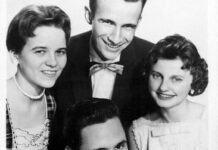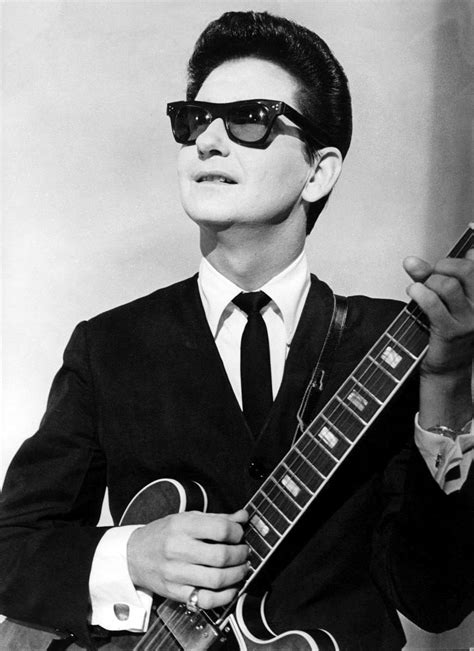Orson Welles and his colleagues scrambled to pull together the show; they ended up writing pop culture history
 Orson Welles (arms raised) rehearses his radio depiction of H.G. Wells’ classic, The War of the Worlds. The broadcast, which aired on October 30, 1938, and claimed that aliens from Mars had invaded New Jersey, terrified thousands of Americans. (© Bettmann/CORBIS)
Orson Welles (arms raised) rehearses his radio depiction of H.G. Wells’ classic, The War of the Worlds. The broadcast, which aired on October 30, 1938, and claimed that aliens from Mars had invaded New Jersey, terrified thousands of Americans. (© Bettmann/CORBIS)
.
On Halloween morning, 1938, Orson Welles awoke to find himself the most talked about man in America. The night before, Welles and his Mercury Theatre on the Air had performed a radio adaptation of H.G. Wells’s The War of the Worlds, converting the 40-year-old novel into fake news bulletins describing a Martian invasion of New Jersey. Some listeners mistook those bulletins for the real thing, and their anxious phone calls to police, newspaper offices, and radio stations convinced many journalists that the show had caused nationwide hysteria. By the next morning, the 23-year-old Welles’s face and name were on the front pages of newspapers coast-to-coast, along with headlines about the mass panic his CBS broadcast had allegedly inspired.
Welles barely had time to glance at the papers, leaving him with only a horribly vague sense of what he had done to the country. He’d heard reports of mass stampedes, of suicides, and of angered listeners threatening to shoot him on sight. “If I’d planned to wreck my career,” he told several people at the time, “I couldn’t have gone about it better.” With his livelihood (and possibly even his freedom) on the line, Welles went before dozens of reporters, photographers, and newsreel cameramen at a hastily arranged press conference in the CBS building. Each journalist asked him some variation of the same basic question: Had he intended, or did he at all anticipate, that War of the Worlds would throw its audience into panic?
That question would follow Welles for the rest of his life, and his answers changed as the years went on—from protestations of innocence to playful hints that he knew exactly what he was doing all along.

On the evening of October 30, 1938, radio listeners across the U.S. heard a startling report of mysterious creatures and terrifying war machines moving toward New York City. But the hair-raising broadcast was not a real news bulletin—it was Orson Welles’ adaptation of the H. G. Wells classic “The War of the Worlds.” A. Brad Schwartz boldly retells the story of Welles’ famed radio play and its impact.
The truth can only be found among long-forgotten script drafts and the memories of Welles’s collaborators, which capture the chaotic behind-the-scenes saga of the broadcast: no one involved with War of the Worlds expected to deceive any listeners, because they all found the story too silly and improbable to ever be taken seriously. The Mercury’s desperate attempts to make the show seem halfway believable succeeded, almost by accident, far beyond even their wildest expectations.
* * *
By the end of October 1938, Welles’s Mercury Theatre on the Air had been on CBS for 17 weeks. A low-budget program without a sponsor, the series had built a small but loyal following with fresh adaptations of literary classics. But for the week of Halloween, Welles wanted something very different from the Mercury’s earlier offerings.
In a 1960 court deposition, as part of a lawsuit suing CBS to be recognized as the broadcast’s rightful co-author, Welles offered an explanation for his inspiration for War of the Worlds: “I had conceived the idea of doing a radio broadcast in such a manner that a crisis would actually seem to be happening,” he said, “and would be broadcast in such a dramatized form as to appear to be a real event taking place at that time, rather than a mere radio play.” Without knowing which book he wanted to adapt, Welles brought the idea to John Houseman, his producer, and Paul Stewart, a veteran radio actor who co-directed the Mercury broadcasts. The three men discussed various works of science fiction before settling on H.G. Wells’s 1898 novel, The War of the Worlds—even though Houseman doubted that Welles had ever read it.
The original The War of the Worlds story recounts a Martian invasion of Great Britain around the turn of the 20th century. The invaders easily defeat the British army thanks to their advanced weaponry, a “heat-ray” and poisonous “black smoke,” only to be felled by earthly diseases against which they have no immunity. The novel is a powerful satire of British imperialism—the most powerful colonizer in the world suddenly finds itself colonized—and its first generation of readers would not have found its premise implausible. In 1877, the Italian astronomer Giovanni Schiaparelli had observed a series of dark lines on the Martian surface that he called canali, Italian for “channels.” In English, canali got mistranslated to “canals,” a word implying that these were not natural formations—that someone had built them. Wealthy, self-taught astronomer Percival Lowell popularized this misconception in a series of books describing a highly intelligent, canal-building Martian civilization. H. G. Wells drew liberally from those ideas in crafting his alien invasion story—the first of its kind—and his work inspired an entire genre of science fiction. By 1938, The War of the Worlds had “become familiar to children through the medium of comic strips and many succeeding novels and adventure stories,” as Orson Welles told the press the day after his broadcast.
After Welles selected the book for adaptation, Houseman passed it on to Howard Koch, a writer recently hired to script the Mercury broadcasts, with instructions to convert it into late-breaking news bulletins. Koch may have been the first member of the Mercury to read The War of the Worlds, and he took an immediate dislike to it, finding it terribly dull and dated. Science fiction in the 1930s was largely the purview of children, with alien invaders confined to pulp magazines and the Sunday funnies. The idea that intelligent Martians might actually exist had largely been discredited. Even with the fake news conceit, Koch struggled to turn the novel into a credible radio drama in less than a week.
On Tuesday, October 25, after three days of work, Koch called Houseman to say that War of the Worlds was hopeless. Ever the diplomat, Houseman rang off with the promise to see if Welles might agree to adapt another story. But when he called the Mercury Theatre, he could not get his partner on the phone. Welles had been rehearsing his next stage production—a revival of Georg Buchner’s Danton’s Death—for 36 straight hours, desperately trying to inject life into a play that seemed destined to flop. With the future of his theatrical company in crisis, Welles had precious little time to spend on his radio series.
With no other options, Houseman called Koch back and lied. Welles, he said, was determined to do the Martian novel this week. He encouraged Koch to get back to work, and offered suggestions on how to improve the script. Koch worked through the night and the following day, filling countless yellow legal-pad pages with his elegant if frequently illegible handwriting. By sundown on Wednesday, he had finished a complete draft, which Paul Stewart and a handful of Mercury actors rehearsed the next day. Welles was not present, but the rehearsal was recorded on acetate disks for him to listen to later that night. Everyone who heard it later agreed that this stripped-down production—with no music and only the most basic sound effects—was an unmitigated disaster.
This rehearsal recording has apparently not survived, but a copy of Koch’s first draft script—likely the same draft used in rehearsal—is preserved among his papers at the Wisconsin Historical Society in Madison. It shows that Koch had already worked out much of the broadcast’s fake news style, but several key elements that made the final show so terrifyingly convincing were missing at this stage. Like the original novel, this draft is divided into two acts of roughly equal length, with the first devoted to fake news bulletins about the Martian invasion. The second act uses a series of lengthy monologues and conventional dramatic scenes to recount the wanderings of a lone survivor, played by Welles.
THERE”S MUCH MORE TO THIS WELL-RESEARCHED, DETAILED ARTICLE TO BE FOUND HERE AT THE SMITHSONIAN.com WEBSITE
http://www.smithsonianmag.com/history/infamous-war-worlds-radio-broadcast-was-magnificent-fluke-180955180/#sM8yoGAlViRby2xx.99
Give the gift of Smithsonian magazine for only $12! http://bit.ly/1cGUiGv







